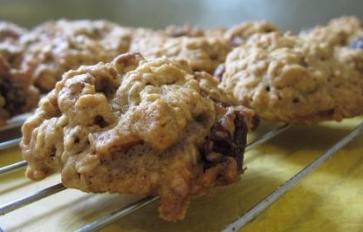
It sounds exotically hilarious and frankly, it’s impossible to say without a bit of a snigger. But laugh as you may, couscous is a powerhouse of nutrients that can definitely add to your health quotient...
Couscous (not to be confused with what is called khus-khus, or poppy seeds) is a great grain substitute ideal for weight watchers. It has taste and texture and is a very pliable dish that can be eaten sweet or savory in any form! From being served with salads to stews, from desserts to even couscous upma or porridge, this humble little dish has firm roots all over the world.
Is couscous a grain?
This super grain is actually not a grain, but a kind of pasta made from semolina wheat. Couscous is made by rolling and shaping moistened semolina wheat and then coating it with finely ground wheat flour. Once coated, the wheat is sieved. The pellets that are too small fall through the sieve to be rolled again and then sieved. This process continues until all the semolina has been formed into tiny grains of couscous (typically 1mm in diameter).
Who invented couscous?
In the book A Mediterranean Feast author Clifford Wright mentions that couscous was invented by the Berber in North Africa, adopted by Arabs and then showed up in the Eastern Mediterranean region. The literal meaning of couscous is well-rounded or well-shaped, from the Berber word seksu, and many believe the Moors accidentally & lazily invented couscous while making noodles. The recent celebrity status of couscous can be laid at the feet of celebrity chefs like Jamie Oliver, staunch advocates of this light and yummy “grain.”
How is couscous eaten?
Traditionally, couscous is served much as rice is, often with or under a savory stew. However, couscous salads, side dishes, and even desserts are pretty common. Similar to rice, couscous is as versatile as the dish it is served with or can be easily spiced to suit any recipe.
Health Benefits of Couscous
- Low in calories: 1 cup of couscous provides 176 calories. It contains fewer calories compared with a cup of rice and so can be a good low-calorie grain substitute. The next time you plan to diet, replace the rice in your plate with couscous for the same energy, but lesser calories.
- Protein: Most grains are low in proteins, but a cup of couscous adds 6g of protein in the diet or 12% of the 50g daily value
- Selenium: 1 cup of this super-food also has 43 mcg of selenium or 61% of the 70 mcg FDA daily value. Selenium is an antioxidant commonly used to protect blood vessels from atherosclerosis, a condition that causes the buildup of plaque and narrowing of the arteries. Significant dietary sources of selenium are relatively rare, and including couscous in the diet helps meet the daily requirement.
- Potassium: Potassium aids in regulating blood pressure and heartbeat, controlling fluid balance, and also assisting with muscle contractions. Since the heart is a muscle, the body requires potassium to prevent arrhythmias or irregularities of the heartbeat. A 1-cup serving of couscous provides 91 mg of potassium or 39% of the 3,500 mg FDA daily value.
Savory Recipe: Salmon on Couscous
Ingredients
- 1/2 cup couscous
- 1 medium salmon fillet
- extra virgin olive oil
- salt & pepper, to taste
- a few mushrooms, sliced thinly
- 1 deseeded red chili, finely chopped
- 2 ripe tomatoes, roughly chopped
- juice of 1/2 a lemon
- 1 Tablespoon fresh cream
- handful of fresh coriander, roughly chopped
Directions
- Put the couscous in a bowl; pour just enough boiling water to cover it. Set aside for 3 minutes to allow the couscous to soak up the water.
- Slice the salmon into finger-size strips, drizzle with olive oil, and season with salt and pepper. Heat a small non-stick frying pan and drop in the salmon strips on the side.
- Add mushrooms and chili and cook for 2 minutes, turning the salmon over.
- Mix the tomatoes, lemon juice, 4 tablespoons of olive oil, and the coriander into the couscous and season to taste.
- Remove the salmon strips to a plate and add the couscous to the veggies left in the pan.
- Mix together and then put the salmon strips back into the pan on top of the couscous, place a lid on, and put back on high heat for a minute.
- To serve, slide everything on to your plate and spoon over the cream.
Sweet Recipe: Fruity Couscous Dessert
Ingredients
- 2 cups juice
- 1 cup dry (instant) couscous
- 1 papaya/mango/melon, cut up in attractive chunks
- whipped cream to top
Directions
- Put the juice on simmer, letting it boil. Add couscous gradually, and continue simmering until couscous is edible (about 3-5 minutes).
- Spoon up hot or cold in dessert bowls and top with fruit and whipped cream.








